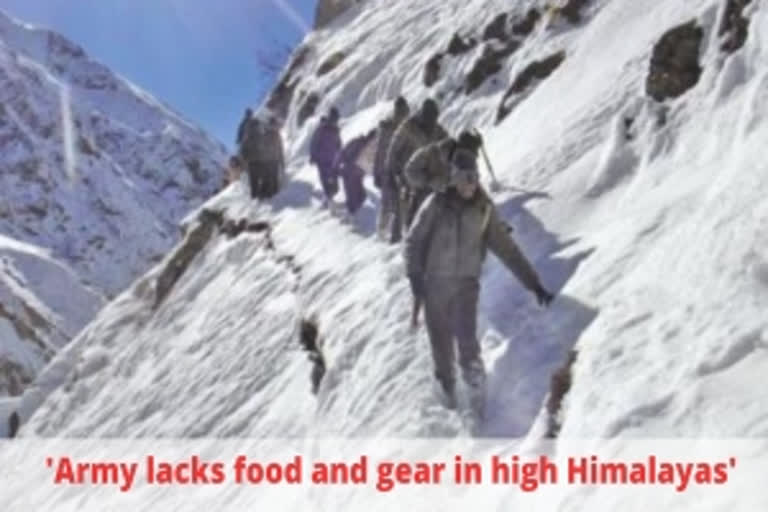New Delhi: Startled by its own findings on serious lapses and deficiencies in supplying High Altitude Clothing and Equipment (HACE) and special food to Indian army soldiers posted in the extreme zones of the Himalayas like Siachen, Doklam, and Ladakh, the Comptroller and Auditor General (CAG) has asked the Ministry of Defence (MoD) for data on disabilities and casualties due to such causes.
The CAG report ordered the MoD to furnish data “being maintained to identify the number of casualties/disabilities to troops, which is especially attributable to the shortcomings in procurement and supply process of the HACE items.”
The MoD had not replied till the writing of the report in September 2019.
The national auditor’s report was tabled in the Rajya Sabha on December 13 but could not be laid down in the Lok Sabha due to which CAG has not yet released the castigating report which highlights the hazards and dangers faced by soldiers doing their national duty in the high Himalayas by turning the searchlights on issues of availability, supply and quality of these critical items including food.
HACE includes Extreme Cold Clothing and Equipment (ECC&E) and Special Clothing and Mountaineering Equipment (SCME).
While ECC&E items are given to soldiers deployed above 9,000 feet altitude in the Eastern Command and above 6,000 feet in other commands, SCME items are supplied to soldiers in very high altitude areas like Siachen.
Citing an example, the CAG report, which covered the period from 2015-16 to 2017-18, said that the stock level of ‘Goggle All-Terrain’ an ECC&E item used to protect soldiers from visionary ailments at high altitude was critically low.
So much so that when demand was raised for 750 snow goggles for the issue to a unit of soldiers on its arrival in a high altitude area, they simply could not be provided for.
Read: President kovind arrives in Hyderabad for winter Sojourn
“The impact of the shortage was vision impairment to soldiers as was reported (December 2017) by users. The snow goggles were not provided till the time of audit (July 2018),” the report said.
As of June 2016, June 2017 and June 2018, the total stock of ‘Goggles All-Terrain’ ranged from just 5.6 per cent to 16.07 per cent against the total authorization rendering the stock ‘critically low’ due to poor supply.
The CAG also found a lot of issues in the case of special rations to soldiers serving in high altitude areas above 12,000 feet.
Such areas have extreme environmental conditions where the temperature falls to even below 50 degrees centigrade in winters.
The oxygen-depleted air in the high altitude combined with the severe cold cause appetite loss due to various physiological changes leading to weight loss and reduction in performance. As a result, the normal army ration is not sufficient in terms of calorific content.
The aim of special rations, therefore, is to provide alternative food items in order to alleviate certain psychological and physiological conditions that the troops face in the inhospitable conditions.
The CAG found that in the Northern and Eastern Commands, procurement of costlier special ration substitutes, like for instance, chicken kebab for fresh eggs, honey for ‘semiyan’ or ‘chikki’ peanut for salted groundnuts, resulted in reduced quantity of calorie intake of the soldiers “ranging between 48.00 and 82.75 per cent.”
The low calorific intake would have led to subsequent weight loss for the soldiers which in turn would have impacted the health and fitness of the troops at such extreme altitudes and climatic conditions, the national auditor noted in its report.
From the time that India has deployed troops in Siachen in 1984 to 2018, 869 Indian soldiers have lost their lives in Siachen due to factors other than combat.
During this period, the government has spent more than Rs 7,500 crore in procuring special clothing and mountaineering equipment for the soldiers posted in high-altitude areas.
Also Read: Climbers from Pak, B'desh, China and Afghanistan need permission to scale Indian peaks: MHA



